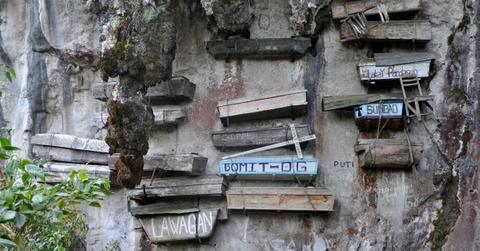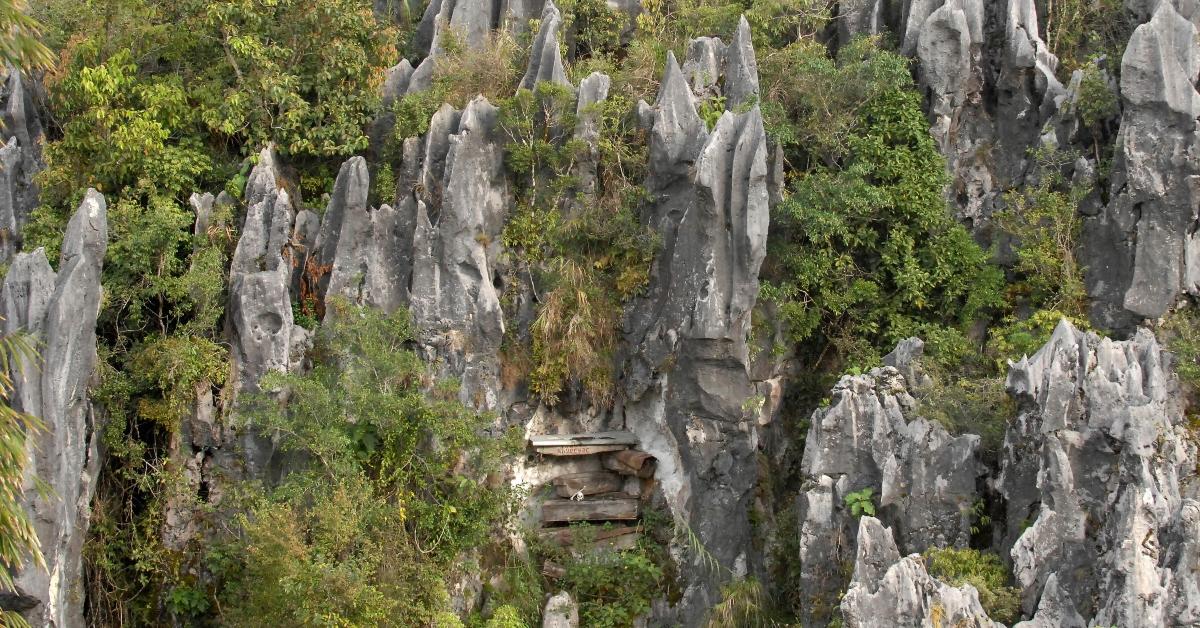Suspended in History: The Fascinating Story Behind Sagada's Hanging Coffins
Published Oct. 31 2023, 4:52 p.m. ET

The Gist:
- The hanging coffins of Sagada are in the mountains of the northern Philippines.
- Igorot tribe members hung coffins on the cliff so the deceased could be closer to the spirits of their ancestors.
- The ritual of hanging coffins was practiced up until 2010.
If you enjoy traveling to more macabre destinations around the world, then you should definitely put the hanging coffins of Sagada on your bucket list.
For generations, members of the Igorot tribe in Sagada, Philippines, have been laying their loved ones to rest in coffins hung off the side of a mountain. This ancient tradition has continued into the 2000s but was stopped in 2010. Let’s explore what makes the hanging coffins of Sagada so fascinating and what you need to know to visit the area.

The hanging coffins of Sagada are a funerary practice in the Philippines.
The Igorot people live in the remote village of Sagada, in the mountains of Luzon, the largest island in the Philippines. If you travel to this area, which is almost nine miles outside of Manila, you will see the coffins hanging on the side of a cliff. Some of the coffins even have the names of the deceased who are inside.
This ritual has been a funerary practice of tribe members for over 2,000 years. According to the BBC, traditionally, each coffin was crafted by the person who would eventually lay to rest in it. Early in the practice, the coffins were usually small, about one meter (3.2 feet) long.
The deceased were laid in the fetal position in the coffin, which often required their bones to be broken to get them to fit inside. In a fetal position, the deceased could leave life the way they entered it as a baby.
“It’s like returning back to where you came from, in the foetal position in the womb,” Igorot tour guide Siegrid Bangyay told the BBC.
Where the coffin is positioned on the cliffside is also symbolic. Placing the dead up high puts them close to ancestral spirits, per Rough Guides. The altitude also prevents their corpse from rotting in the ground, a fate that elders feared, an Igorot tribesman told Rough Guides.
Cliff burials occurred in Sagada up until the last one in 2010, the BBC reports. You can tell the difference between the ancient coffins on the cliff and the newer ones because the newer ones are twice the size.
Can you visit the hanging coffins of Sagada?
Yes, you can visit the hanging coffins of Sagada and learn about the history of the Igorot people and their traditions. According to Atlas Obscura, it takes about 12 to 13 hours to get to Sagada from Manila by car. The best time to visit is during the dry season, between November and April. During the rainy season, May to October, the roads become hazardous and difficult to travel.
When you visit the hanging coffins of Sagada, you must also remember to be respectful of the area. You are at the burial grounds of other people’s family members, so you should never try to touch the coffins or walk underneath them.